Septic clean-outs are one of the most dreaded times for a homeowner. Not only is it a time-consuming process but it is also extremely expensive. The price that you will end up paying to have your septic system removed is more than many of us can afford. Here is some helpful information that will help you know what to expect during septic clean-out.
You should know that your home has been out of service for a few days and this will cause your septic system to go into overcapacity. In this stage your septic will be full and there is nothing that can be done to reverse this situation. This is when a septic clean-out company will come in and remove all the waste that your septic has accumulated during the past few months.
After the waste is removed, there is still a little left to be cleaned out. Your septic system is pumped again with fresh sewage and all of the solid waste material that the system was unable to remove comes out the other end. This leaves a lot of solid matter in your septic system that needs to be neutralized. Once this is done your system should operate smoothly and return to service quickly.
If you notice any type of damage on the property you are cleaning out, this could be an indication that the septic clean-out is not going to be successful. If you see any wood, grass, or bushes growing up near the septic lines you need to remove these as soon as possible. These things will block the flow of waste into your septic system and they will not help your system perform correctly. Your septic clean-out team should be able to tell you exactly what you are blocking and how much further along the lines you need to clear it off. If you do not remove these items from the area you will find that your septic cleanout team is unable to complete their job.
Once all of the trash and debris has been cleared away, there is a special tool that can be used during a septic clean-out. This tool is called a “screed”. It is a very large plastic tunneling device that is able to capture all of the roots in the soil so that they do not get the chance to grow back up through the pipes. Once a screed has been purchased it can be used in order to route all of the waste materials in an area. Once this has been done the septic system will once again be able to function properly.
The biggest problem that many people face regarding their septic systems is dealing with all of the waste that is flushed down the toilet each day. Every time this waste is flushed, it takes a small amount of time for the waste to go through the pipes and then exit them in a form of liquid. This liquid is what is left behind after your septic tank has performed its self-cleanout process. What happens often is that the liquid can actually enter the septic tank and cause some damage to the lining. If this happens the septic will have to be repaired, which can be quite costly. By using a “screed” you will be able to root out any of the smaller root problems that may be causing the septic system to not work as it should.



